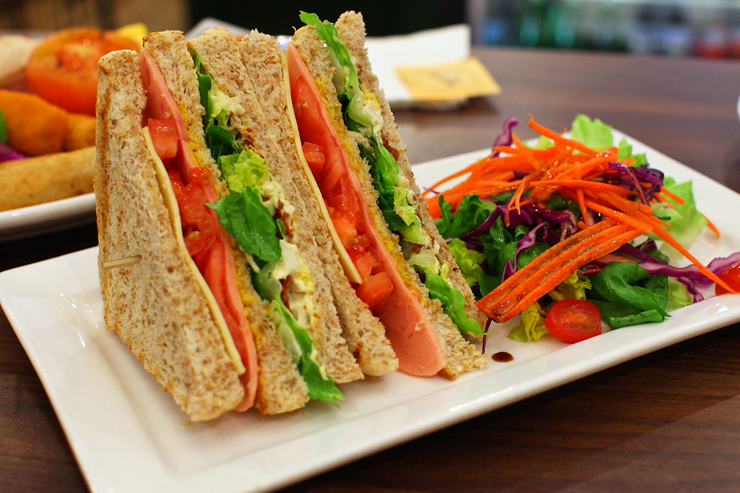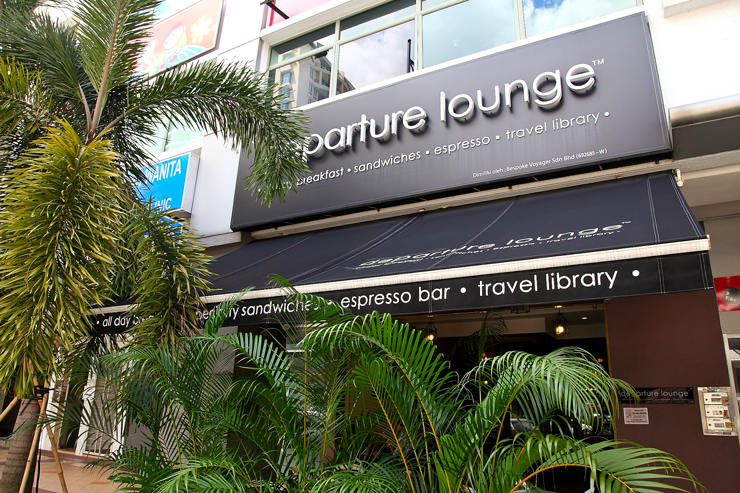On average, operators shelled out 2 cents of every sales dollar for marketing expenses, which means operators spent more than $10 billion to promote their restaurants. With such a huge amount of dollars being spent on nonfood- or nonlabor-related costs, the question begs, "Where does it all go and is the expense justified?"
To find the answer we must first define marketing expense. The NRA Restaurant Industry Chart of Accounts groups marketing expense within the operating expenses section of the profit-and-loss statement.
Typical marketing expenses include:
 . . .Restaurant operators need to look at marketing in terms of return on investment versus an 'expense.' If you can take $1 in cash flow and turn it into $7 in sales, your marketing budget is unlimited.  | | -- Rory Fatt - Restaurant Marketing Systems |
|
|
√ Selling and promotion
√ Direct mail
√ Postage
√ Web site marketing
√ Advertising
√ Newspapers and magazines
√ Outdoor signs
√ Radio and television
√ Photographs, preparation of copy
√ Public relations (PR)
√ Sports team sponsorship
√ Civic and community projects
√ Donations to nonprofit organizations
√ PR firm fees
√ Research
 . . . Half the money I spend on advertising is wasted; the trouble is I don't know which half.  | | -- John Wanamaker - Department store & advertising pioneer |
|
|
√ Product testing
√ Visits to other restaurants
√ Outside research firm
√ Conducting focus groups
√ Complimentary food & beverages
√ Customer comps for kitchen mistakes, bad experience
√ Comps for special guests, dignitaries
√ Discounted food & beverages
√ Product cost on discounts
As you can see, marketing encompasses a wide range of activities. Many operators think of marketing and advertising as the same thing; however, advertising is just but one vehicle by which operators market their restaurant. There are many other components within marketing. Does that mean operators are expected to use all of these marketing components if they are to be successful? Of course not.
Every restaurant concept is unique when it comes to creating the "magic" for drawing diners. Your marketing technique should reflect the same image as the menu, service style and ambience. For instance, the often-debated use of coupons as a marketing tool has proven to be a successful strategy for national pizza chains; however, if you are a fine dining Italian eatery that caters to an affluent client base, then coupons may not be the proper marketing tool for you.
While the particulars may differ on "how" operators market their restaurant, no one wants to throw money down the drain, so regardless of your operation type, marketing expenses need to be planned and tracked if you want to get a good return on your marketing investment.
First, Create a Budget
The first step in planning your marketing ROI (return on investment) expectations is to create a marketing budget. Be prepared to submit yourself to the old adage, "You have to spend money to make money." But how much does an operator have to spend on marketing to make it a profitable endeavor? And, where does one start when formulating a budget?
It seems a logical starting budget would be to set aside an amount at least equal to industry standards, which is about 2 percent of sales. You can increase or decrease your budget as you become more proficient in your marketing efforts. But remember, a budget, particularly in the case of marketing shouldn't be confining. The purpose of marketing is to increase sales. So if your efforts get results, don't restrict your efforts because of budget.
Now, some people reading this article may think, "Oh sure, it's easy to say we're going to set aside money for marketing; but I'm having trouble just making payroll each week." In fact, many operators claim that marketing expense is a luxury they can't afford. I asked Rory Fatt, president and founder of Restaurant Marketing Systems how he responds when restaurateurs tell him they don't have the cash needed to properly promote their restaurants. His answer is this: "Restaurant operators need to look at marketing in terms of return on investment versus as an 'expense.' If you can take $1 in cash flow and turn it into $7 in sales, your marketing budget is unlimited."
In other words, if you properly invest your marketing dollars then you should expect a return on that investment. By selectively choosing marketing promotions that have a proven ROI, you can easily justify setting aside enough each month to aggressively market your restaurant.
Selecting Promotions That Can Be Measured
The problem is that many operators blindly place advertisements, issue coupons, and discount their menu to try and draw more customers, only to find that they've increased their marketing expense but not their sales.
Department store and advertising pioneer John Wanamaker once said, "Half the money I spend on advertising is wasted; the trouble is I don't know which half." And therein lies the challenge for independent restaurant operators. How do you know which half of your marketing expenditures isn't a waste of money?
So that we don't lose focus on the purpose of this article, we won't get into the merits of various advertising media such as television, radio or publications other than to point out that the objectives for advertising for independent restaurant versus chain restaurants differ. McDonald's, T.G.I. Friday's, Chili's and other large chains use media advertising to build brand awareness so that diners across the country know who they are. Independent restaurants, on the other hand, are more concerned with their local market; but to build brand awareness the same way the chains do means they'd have to spend like the chains and that just isn't feasible.
One drawback of media advertising is that it's hard to measure effectiveness. Let's say you spend $1,000 to place an ad in the local paper to introduce your restaurant to the community during Valentine's Day. Valentine's Day comes and sales are way above average. But it's Valentine's Day; for many restaurants sales are always stronger. How do you know how effective your ad was, if at all?
Restaurant business seminar leader and consultant Bill Main is often attributed with making the statement, "If you can't measure it, you can't manage it." The point being, try to choose promotions that can be measured.
Bharat Mansukhani is the owner of a two-unit QSR (quick-service restaurant), Flamers Burgers & Chicken in Delaware and Maryland. He told us he has been a member of Fatt's RMS since 1999 and is a big believer in tracking (measuring) all of his marketing efforts. "I never, ever put a coupon out there or advertise simply for the sake of advertising," Bharat says. "I always want to know what's in it for me. If I do a promotion then I need to know what it's going to cost me and how much I'm going to make off of it."
Bharat constantly comes up with new ideas for promoting sales, usually with several going on at once. Most of his promotions require that customers spend a certain amount before they can take advantage of the offer. For instance, a recent visit to his Web site at
http://burgersforme.com tempts consumers to get $15 (three cards at $5 each) in free "Flamers" gift cards for every $5 that they purchase. Whereas the $5 gift card purchase is just like cash, the three promotional gift cards are worth $5 off a minimum purchase of $10.
To accomplish his goal of measuring his return on each marketing investment, Bharat insists that his managers keep a daily accounting of all promotions and redemptions. Redeemed promotional cards are attached to a duplicate copy of the guest receipt that shows the entire sale amount. Each day, his managers record the number of guests, discount amount, and net sales collected for each transaction. He determines the gross profit by deducting his food cost from the net sale and records the results on a spreadsheet form designed to keep a running profit-and-loss tabulation for each promotion. He then compares his expenses such as printing (investment) with the gross profit made from the promotion (return) to come up with an ROI ratio.
For instance, if expenses to create and market the cards were $200, and the gross profit of the sales associated with the redemption was $800, then the ROI would be 4 to 1, or 400 percent. Now he can evaluate if the return was worth the investment. This is much harder to do with traditional advertising.
Restaurants use all types of promotions to get people to try their restaurant. But if they don't track their results they can't properly evaluate the effectiveness. Direct mail and e-mail marketer Jay Siff of Moving Targets, a marketing firm that specializes in helping restaurants reach new movers in their market, says his biggest challenge is to get operators to realize the potential lifetime value of a new customer. "It's a lot easier for us to point out the lifetime value to our pizza operators because they track delivery orders by customer, so they know how much a customer will spend," Siff says.
He then asked me to do the math if I were to gain a customer that dines with me once a month. Let's say you have a check average of $20, and that your average party size is 2.5. That's $50 in revenue every time this guest comes in. That's $600 a year; $3,000 over five years.
Siff encourages his clients to use an incentive such as a discount or free offer to get new movers to try them. He then recommends that operators track the redemptions and even to collect their names and contact information for addition to their customer database and future marketing. Many operators will offer a bounce-back promotion to get the customer to come in for a second visit. If the restaurant does its job well then maybe it's gained a lifetime customer.
Bharat definitely realizes the lifetime value of his customers. That is why he tries to collect the names and e-mail addresses of as many of his guests that he can. One way he tracks his guests' frequency is by enrolling them in his loyalty program. He uses an automated service that keeps tabs on customer purchases and automatically issues rewards when point totals are achieved. He receives a periodic tracking report that again helps him to evaluate the ROI for his loyalty program. He then adds the names from his loyalty program to that of his e-mail database for his periodic e-mail promotions of which he also tracks.
Kyle Agha, proprietor of New Town Bistro in Winston-Salem, North Carolina, said that his customer database has grown to more than 15,000 names and his e-mail list is around 4,000 strong. Agha uses a similar marketing tracking system to that of Bharat. All of his promotions are measurable, even if they do require additional work. He brings in one of his hostesses part-time to keep up with the additional data entry. Agha also tracks the number of responses he gets from each ZIP code. This way, he knows where the bulk of his core customer base resides.
By tracking the results of his marketing efforts he is better able to plan for promotions. For example, one of his standard promotions is to send an invitation to his guests on their birthday, inviting them to bring their friends to celebrate their birthday while giving the birthday recipient a free entrée. By tracking the results he knows that the average respondent comes in with a party of 2.6 covers, meaning that after the free entrée is deducted he still gets around $65 in sales revenue. He also knows that 12 percent to 14 percent of the people who get the invitation will respond.
Automated Tracking
Surprisingly, of the several operators I talked to, few of them use their point-of-sale (POS) system to keep up with their marketing promotions. One of the reasons given was that their POS program wasn't configured properly, or could not track their promotions in the manner needed to measure the results.
Most POS systems can be programmed with a variety of redemption-style discounts that properly adjust the guest's bill while giving the operator a reporting of detailed discount activity. However, there is a void in the reporting abilities of most POS systems in that they can't provide a report that shows the gross revenue or gross profit of the entire sale associated with the redemption. For this information the operator is usually forced to print out guest checks and tabulate that information separately.
On the other hand, the POS industry has made great strides in its ability to integrate loyalty programs and keep up with customer history. Virtually every POS system on the market touts its prowess for providing in-depth customer tracking and reporting as well as giving operators the ability to create a variety of in-house loyalty programs that keep up with customer purchases and automatically issues rewards.
Hopefully, with more and more independent operators adopting direct marketing strategies to build their repeat customer base, we'll see a shift by POS developers to integrate marketing-oriented programming that can provide marketing ROI reports to the restaurateur. Meanwhile, you can keep track of marketing promotions by creating a spreadsheet that tracks expenses and redemptions, and calculates ROI for each of your marketing promotions.
How to Track and Calculate Marketing ROI
You can keep track of marketing promotions by creating a spreadsheet that calculates the following: budget, expenses, response summary, and ROI.
Step 1: Create a Budget for Each Promotion
List each anticipated expense on a separate line that includes the type of expense, the vendor or supplier, and the estimated cost. Typical expenses include printing, design, postage, mailing list purchases, ads, and labor needed to create and track the promotion.
Step 2: Track Your Expenses
One of the keys to compute an accurate ROI on your marketing promotions is to keep a good history of what each promotion ended up costing you. This way you can revisit past promotions to see actual expenses compared with your budget.
Step 3: Track the Redemptions
The redemption section of your spreadsheet is where you'll record each day's responses. Information you'll need includes the coupon, gift certificate, or other type of redemption piece that identifies the promotion, a copy of the guest check that shows the total amount spent and the discount given.
Optionally, you can create columns for surrounding ZIP codes. Depending on the promotion, you could either preprint the ZIP code on the redemption certificate or have your server ask the guest for their ZIP code and then write it on the certificate.
The most practical method of recording the number of redemptions is to make a summary entry for each day. Each column in the spreadsheet represents the total of all the redemptions and is explained as follows:
Step 4: Calculate the ROI
The next step is to create formulas that show meaningful results so that you can evaluate the effectiveness of each promotion. Here is a sample of results that can be tabulated if you've properly captured the information listed in steps one through three above.
Here is a key to the various factors you will want to analyze in this portion of the spreadsheet:
· Number of Responses: This is the total number of responses received over the entire promotional period.
· Response Rate: This is the percentage of responses received compared with the total number promotional pieces delivered.
· Number of Guests Served: This is the total number of guests served over the entire promotional period where at least one guest at the table had redemptions.
· Number of Guests/Response: This is the average number of guests for each response.
· Total $ Discounts: This is the total amount of discounts given over the entire promotional period.
· Net Sales: This is the total amount of sales (after discounts have been applied and does not include sales tax) generated from the promotion.
· Gross Margin: This is the amount of profit remaining after the cost of sales has been deducted but before expenses of the promotion have been applied.
· Returns: This is the total number of undeliverable promotional pieces (returns) for the entire promotional period.
· P-T-D Cost: This is the total of all expenses recorded in the expenses summary.
· P-T-D Cost /Response: This is the total cost incurred per response. The more successful the promotion, the less cost per response.
· Profit: This is the total amount of gross profit from the promotion. It does not include normal fixed costs associated with the operation of your restaurant.
· Profit/Response: This is the amount of gross profit received for each response to the promotion.
· R.O.I. %: This is the return on investment percentage calculated by dividing the gross profit by the cost of the promotion.
· R.O.I. Ratio: This is the profit dollars return for every dollar spent. The R.O.I. Ratio achieved in this example, $2.72 to every dollar, is considered to be reasonably good.
· Redemption % by ZIP Code: This figure shows which ZIP codes had the greater response rate.
· Redemption % by Day of Week: This figure shows which days of the week have the greater response rate.





































0 comments: